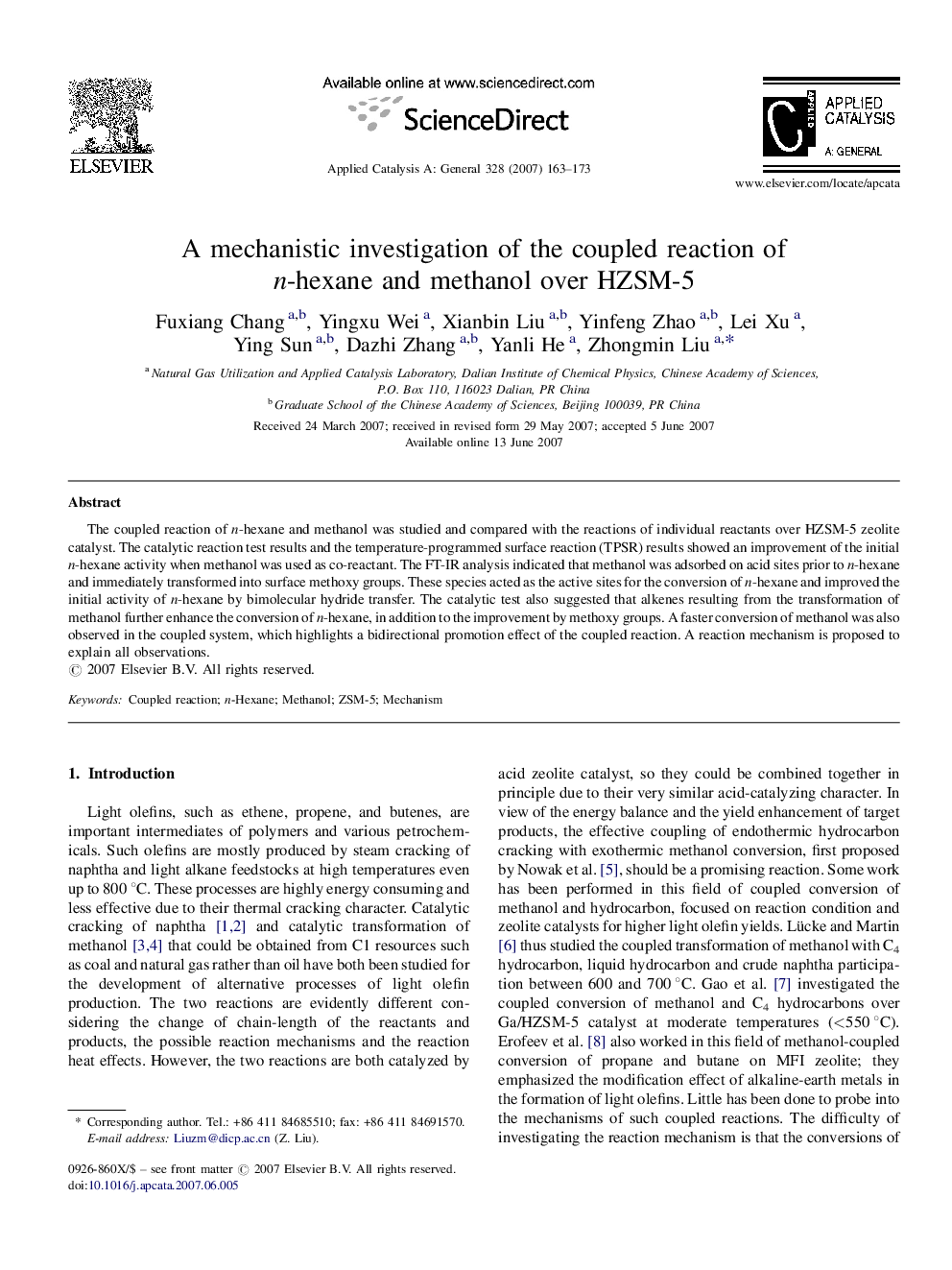| کد مقاله | کد نشریه | سال انتشار | مقاله انگلیسی | نسخه تمام متن |
|---|---|---|---|---|
| 43545 | 45976 | 2007 | 11 صفحه PDF | دانلود رایگان |

The coupled reaction of n-hexane and methanol was studied and compared with the reactions of individual reactants over HZSM-5 zeolite catalyst. The catalytic reaction test results and the temperature-programmed surface reaction (TPSR) results showed an improvement of the initial n-hexane activity when methanol was used as co-reactant. The FT-IR analysis indicated that methanol was adsorbed on acid sites prior to n-hexane and immediately transformed into surface methoxy groups. These species acted as the active sites for the conversion of n-hexane and improved the initial activity of n-hexane by bimolecular hydride transfer. The catalytic test also suggested that alkenes resulting from the transformation of methanol further enhance the conversion of n-hexane, in addition to the improvement by methoxy groups. A faster conversion of methanol was also observed in the coupled system, which highlights a bidirectional promotion effect of the coupled reaction. A reaction mechanism is proposed to explain all observations.
Conversions of n-hexane without methanol coupling (▵) and with methanol coupling (□) and ratio of coupled n-C6 conversion and uncoupled n-C6 conversion (●) versus contact time at 400 °C over HZSM-5 zeolite (Si/Al = 19). Figure optionsDownload as PowerPoint slide
Journal: Applied Catalysis A: General - Volume 328, Issue 2, 10 September 2007, Pages 163–173